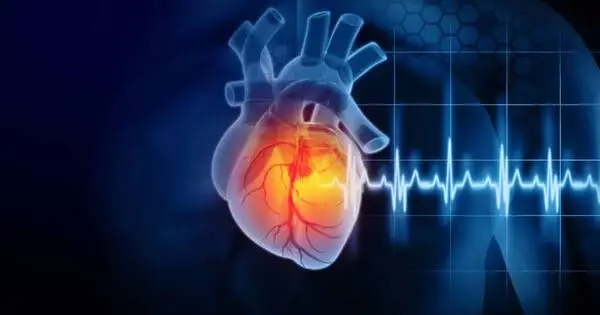The results of a recent mouse study suggest that male and female hearts respond differently to the stress hormone. Further research is needed to determine the implications of these findings for human health and to understand the mechanisms behind the observed differences.
According to a new mouse study, female and male hearts respond differently to the ‘fight or flight’ stress hormone. It could help explain the gender differences in arrhythmia risk. Female and male hearts respond differently to the stress hormone noradrenaline, according to a new study published in Science Advances. The mouse study could have implications for human heart disorders such as arrhythmias and heart failure, as well as how different sexes respond to medications.
The researchers created a new type of fluorescence imaging system that allows them to see how a mouse heart responds to hormones and neurotransmitters in real time using light. Noradrenaline, also known as norepinephrine, was given to the mice. Noradrenaline is a neurotransmitter and a hormone that is involved in the body’s “fight or flight” response.
The findings show that male and female mouse hearts respond uniformly to noradrenaline at first. However, some areas of the female heart return to normal faster than others, resulting in differences in the heart’s electrical activity.
We know that there are sex differences in the risk for certain types of arrhythmias. The study reveals a new factor that may contribute to different arrhythmia susceptibility between men and women.
Jessica L. Caldwell
“In female hearts, the differences in electrical activity that we observed are referred to as repolarization. Repolarization is the process by which the heart resets itself between each heartbeat and is closely linked to certain types of arrhythmias” said Jessica L. Caldwell, the study’s first author. Caldwell is a postdoctoral scholar in the Department of Pharmacology at the University of California, Davis.
“We know that there are sex differences in the risk for certain types of arrhythmias. The study reveals a new factor that may contribute to different arrhythmia susceptibility between men and women,” Caldwell said.
In the United States, heart disease is the leading cause of death. In the United States, heart disease is the leading cause of death for both men and women. In 2020, it was responsible for about 1 in every 4 male deaths and 1 in every 5 female deaths. Despite its impact on both sexes, cardiology research has primarily focused on male subjects.
The researchers wanted to look at factors that may contribute to arrhythmias in this study. Arrhythmias are heart conditions in which the electrical impulses that control heartbeats do not function properly. They affect between 1.5% and 5% of the population.

Methods
The CAMPER mouse, which has been genetically modified to emit light during a very specific chemical reaction in the heart – cAMP binding – is used in the novel imaging system. The cAMP molecule (cyclic adenosine 3′,5;-monophosphate) is an intermediate messenger that converts hormone and neurotransmitter signals, including noradrenaline, into action in heart cells.
A biosensor that uses fluorescence resonance energy transfer transmits the light signals from the CAMPER mouse (FRET). A new imaging system specifically designed for hearts can detect this FRET signal at high speed and resolution. The researchers can now record the heart’s reaction to noradrenaline in real-time, as well as changes in electrical activity.
This new imaging approach revealed the differences in the breakdown of cAMP in female and male mice and the associated differences in electrical activity.
Including female mice leads to discoveries
According to Crystal M. Ripplinger, senior author of the study, the researchers did not intend to study sex-based responses. However, the researchers noticed a pattern of different reactions, which led them to realize the differences were based on gender.
Ripplinger is a professor of pharmacology and an electrical and biomedical engineer. She only used male animals when she started her lab at the UC Davis School of Medicine over a decade ago. That was the standard practice for most research at the time. However, she began including male and female animals in her studies a few years ago.
“Sometimes the data between the sexes is identical. However, if the data begins to vary, the first thing we do is look at gender differences. Using both male and female mice revealed differences that we would never have suspected. Researchers are realizing that studying one sex does not allow them to extrapolate to the other” Ripplinger explained.
She points out that it’s unclear what the differences in cAMP and electrical activity mean in the current study. “The female mice’s response may or may not be protective. However, simply demonstrating a measurable difference in the response to a stress hormone is significant. We hope to learn more in future research” Ripplinger explained.





